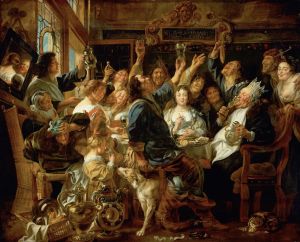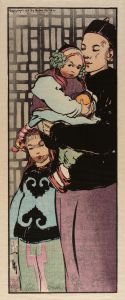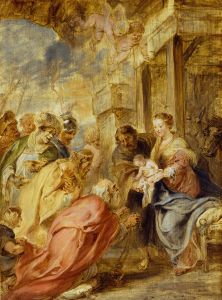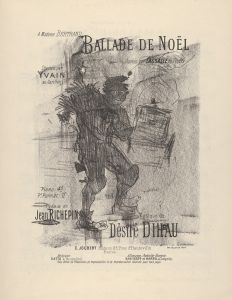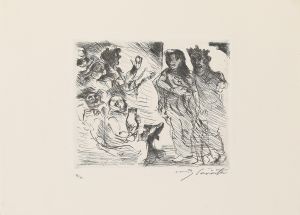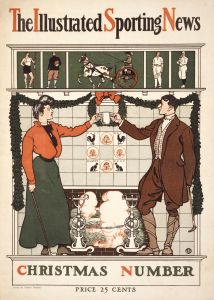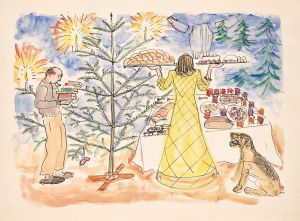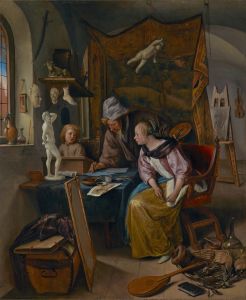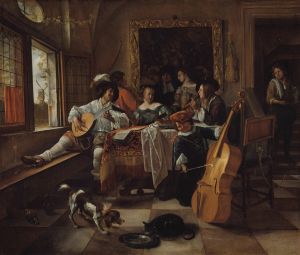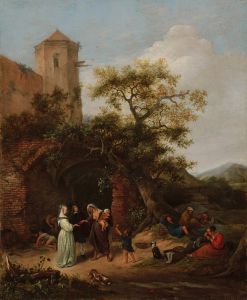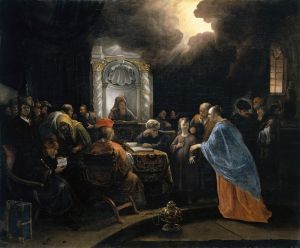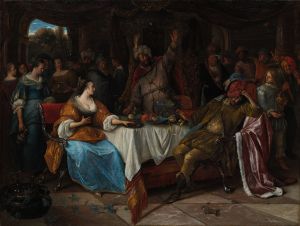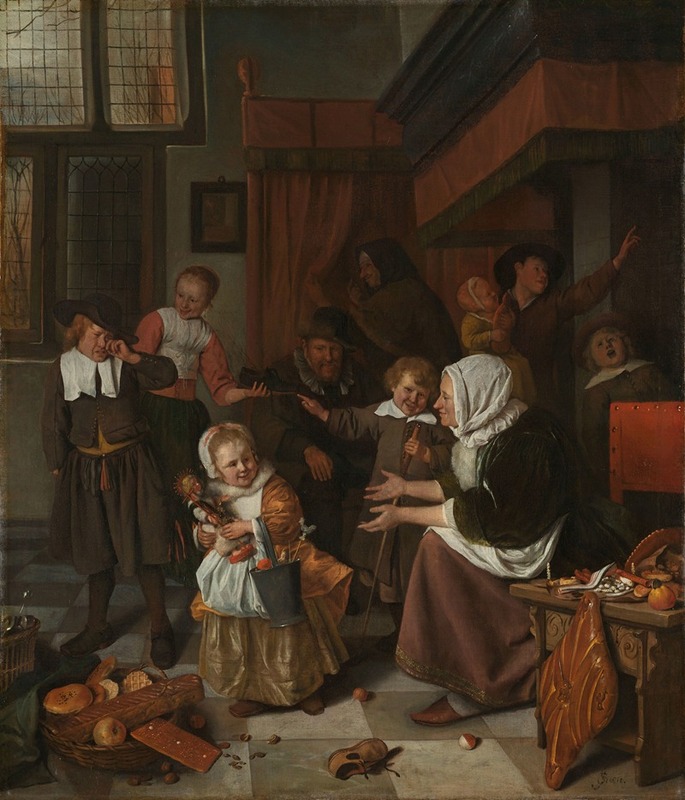
The Feast of St Nicholas
A hand-painted replica of Jan Steen’s masterpiece The Feast of St Nicholas, meticulously crafted by professional artists to capture the true essence of the original. Each piece is created with museum-quality canvas and rare mineral pigments, carefully painted by experienced artists with delicate brushstrokes and rich, layered colors to perfectly recreate the texture of the original artwork. Unlike machine-printed reproductions, this hand-painted version brings the painting to life, infused with the artist’s emotions and skill in every stroke. Whether for personal collection or home decoration, it instantly elevates the artistic atmosphere of any space.
"The Feast of St. Nicholas" is a celebrated painting by the Dutch artist Jan Steen, created around 1665-1668 during the Dutch Golden Age. Jan Steen is renowned for his lively and often humorous depictions of 17th-century Dutch life, and this painting is a quintessential example of his ability to capture the spirit and customs of his time.
The painting illustrates the traditional Dutch celebration of the Feast of St. Nicholas, which occurs on December 5th, the eve of St. Nicholas Day. This holiday is a precursor to the modern Christmas celebration and is particularly significant in the Netherlands. It involves children receiving gifts from St. Nicholas, known as Sinterklaas, who is accompanied by his helper, Zwarte Piet.
In "The Feast of St. Nicholas," Steen presents a domestic scene filled with a sense of joy and mild chaos, characteristic of his work. The painting is set in a typical Dutch home, where a family is gathered to celebrate the holiday. The composition is bustling with activity, capturing the reactions of various family members to the gifts they have received.
At the center of the painting, a young girl gleefully holds up a doll, a prized gift she has received, symbolizing her good behavior. Her expression is one of pure delight, and she is the focal point of the scene. To her right, a boy is visibly upset, crying because he has received a switch instead of a gift, a traditional punishment for naughty children. This contrast between the joyous girl and the disappointed boy adds a humorous and moralistic element to the painting, reflecting the didactic nature of many of Steen's works.
The surrounding family members exhibit a range of expressions and activities. An older woman, possibly the grandmother, looks on with a smile, enjoying the children's reactions. Other children are seen exploring their gifts, while adults engage in conversation, adding to the lively atmosphere. The room is cluttered with toys, sweets, and festive decorations, enhancing the sense of a bustling, celebratory household.
Steen's use of color and light in the painting is masterful. Warm tones and soft lighting create an inviting and intimate setting, drawing viewers into the scene. The detailed depiction of the characters' expressions and the intricate rendering of the domestic interior showcase Steen's skill in capturing the nuances of everyday life.
"The Feast of St. Nicholas" is not only a depiction of a specific cultural tradition but also a reflection of the values and social dynamics of 17th-century Dutch society. It highlights themes of family, morality, and the joy of giving, all conveyed through Steen's characteristic humor and keen observation.
Today, the painting is housed in the Rijksmuseum in Amsterdam, where it continues to be admired for its vibrant portrayal of a beloved Dutch tradition and its insight into the cultural practices of the time. Jan Steen's work remains an important part of art history, offering a window into the past with its lively and engaging storytelling.





